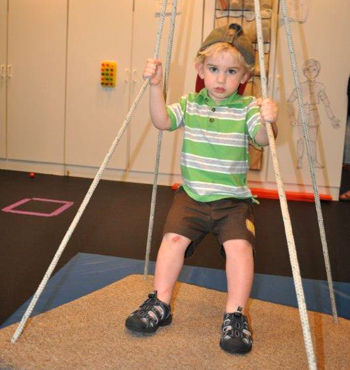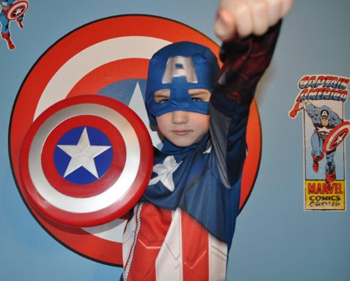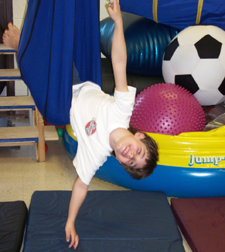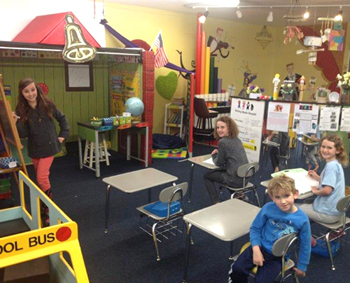
|
Pediatric Occupational, Physical, ABA/Behavioral, Feeding, Speech, and Language Therapies Main Clinic: 931-372-2567 1445 East 10th Street Cookeville, TN 38501 Email: [email protected] HIPAA Secure Email: [email protected] Fax: (931) 372-2572 ABA Clinic: 931-201-9534 400 Dubois Road Cookeville, TN 38501 Email: [email protected] Please call today to get started! Most insurances accepted! |

|
| Who needs therapy? | SE HABLA ESPAÑOL |
ADD/ADHD
ADHD improves with sensory intervention

Research findings from a study of children with attention deficit hyperactivity disorder(ADHD) show that sensory intervention-for example, deep pressure and strenuous exercise-can significantly improve problem behaviors such as restlessness, impulsivity and hyperactivity.
Of the children receiving occupational therapy, 95 percent improved. This is the first study of this size on sensory intervention for ADHD. The Temple University researchers, Kristie Koenig,Ph.D.,OTR/L, and Moya Kinnealey,Ph.D.,OTR/L, wanted to determine whether ADHD problem behaviors would decrease if underlying sensory and neurological issues were addressed with occupational therapy.
Children with ADHD have difficulty paying attention and controlling their behaviors. Many children with ADHD also suffer from sensory processing disorder, a neurological underpinning that contributes to their ability to pay attention or focus.
They either withdraw from or seek out sensory stimulation like movement, sound, light, and touch. This translates into troublesome behaviors at school and home. Normally, we process and adapt to sensory stimulation in our daily environment. But children with ADHD are unable to adjust, and instead might be so distracted and bothered by a sound or movement in the classroom and they can't pay attention to the teacher.
Occupational Therapy techniques appeal to the three basic sensory systems: Tactile, Vestibular, Proprioceptive.
The tactile system controls the sense of light (stress responses usually) and deep pressure (calming responses).
The vestibular system controls sensations of gravity and movement and has a HUGE effect on our ability to sit and stand still, control our eye movements, and help us be still and focused.
The proprioceptive system regulates the awareness of the joints and helps with the muscle system. Many children who have low muscle tone or weak core muscles look "fidgety" as they are constantly moving to feel midline and know where they are in space.
Therapy is tailored to each child's needs and can involve such techniques as creating a specific sensory diet for that child's sensory needs that may include deep pressure touch techniques such as vibration, weighted inputs, deeply brushing the skin, moving on swings or working with an exercise ball.
The goal of ADHD treatment is to prevent failure in school, family problems and poor self-esteem. If not addressed early, the disorder can trouble a child and family far into adulthood.
Contact us today for an Occupational Therapy evaluation, your child does NOT have to have any medical diagnosis for an OT evaluation.
We are here to help and happy to help your precious one!
Classroom Management Strategies for Children with Auditory Processing Disorders
Site empowered by
WebOnTheFly

